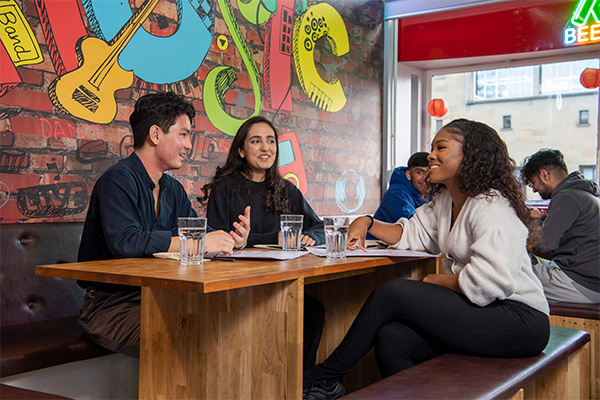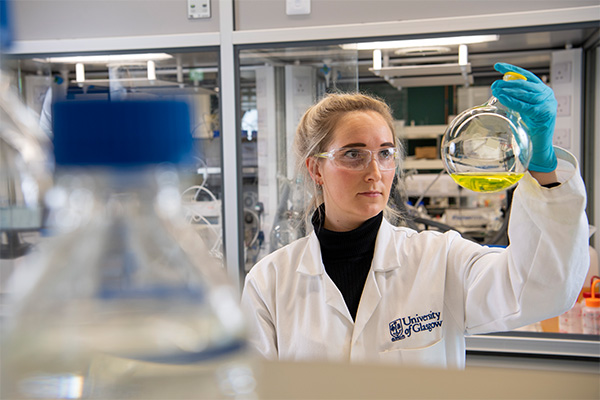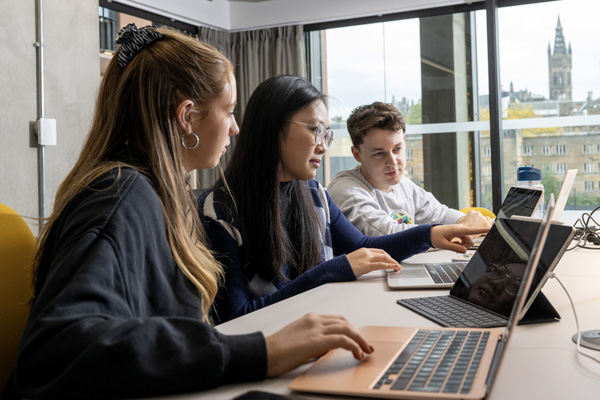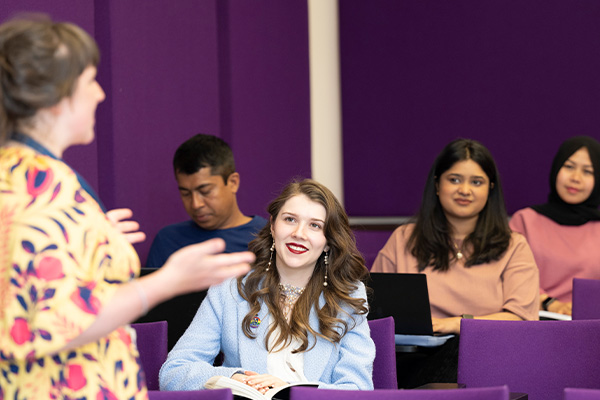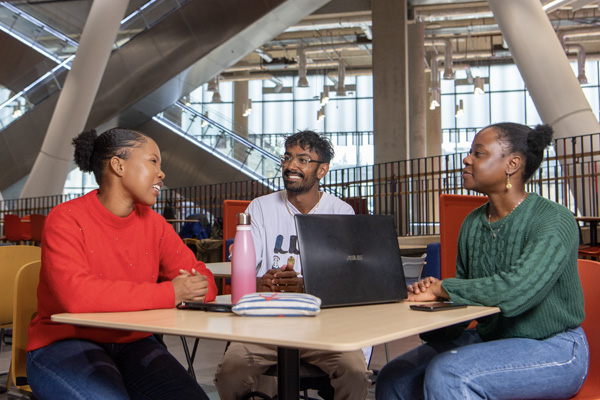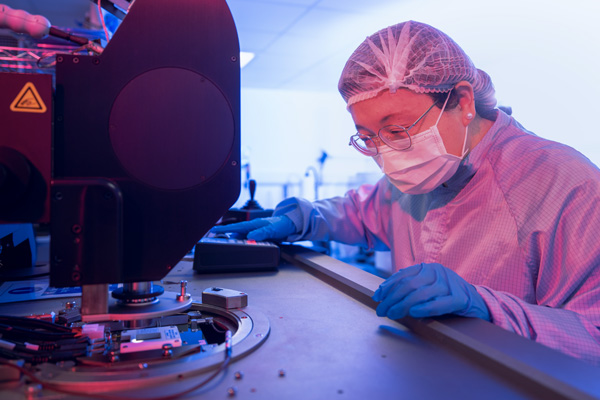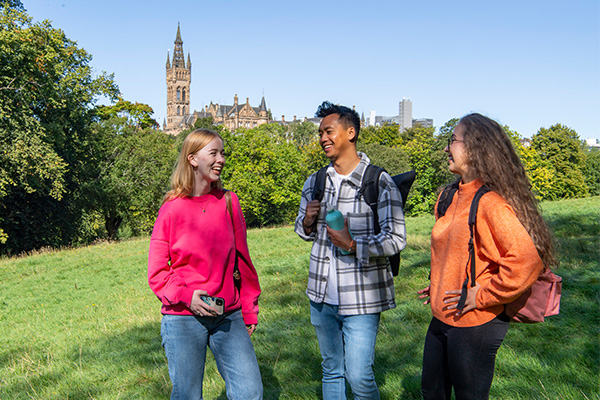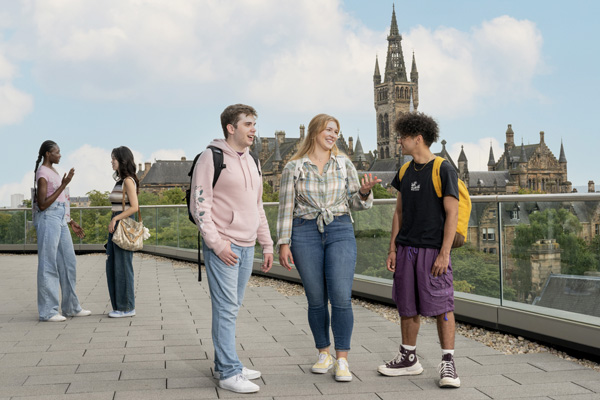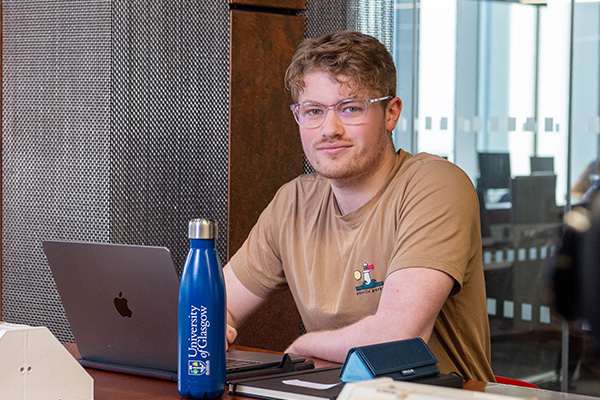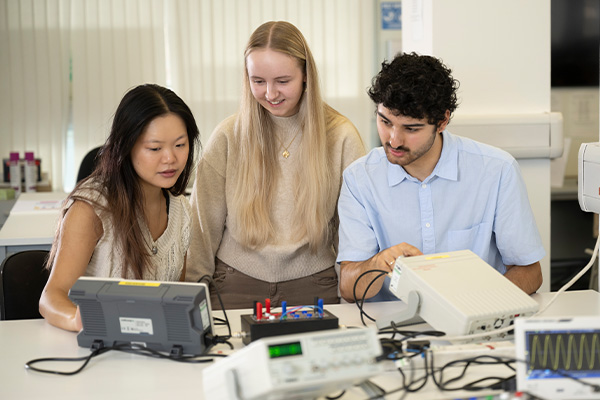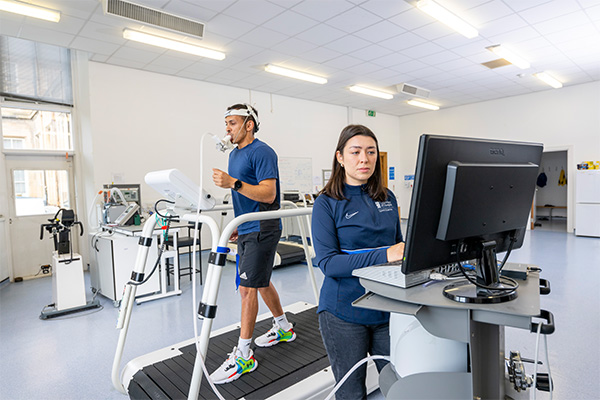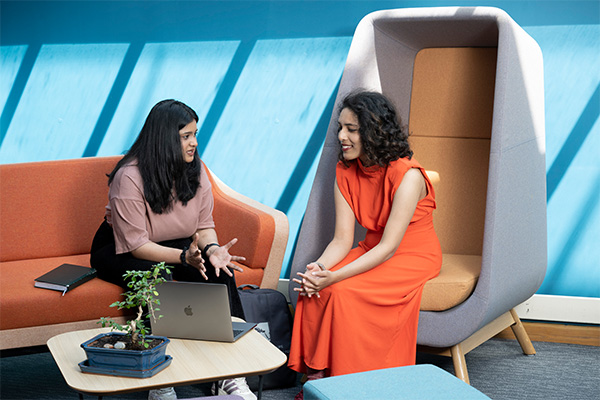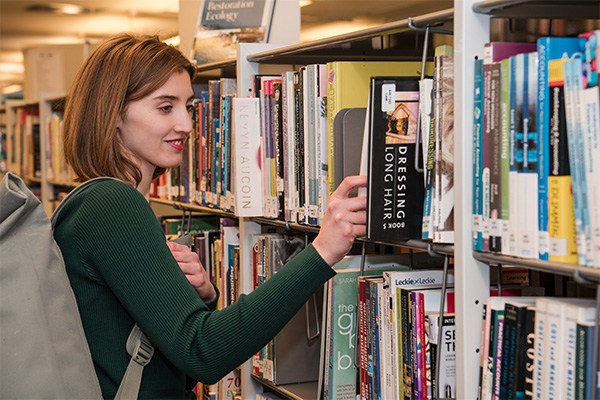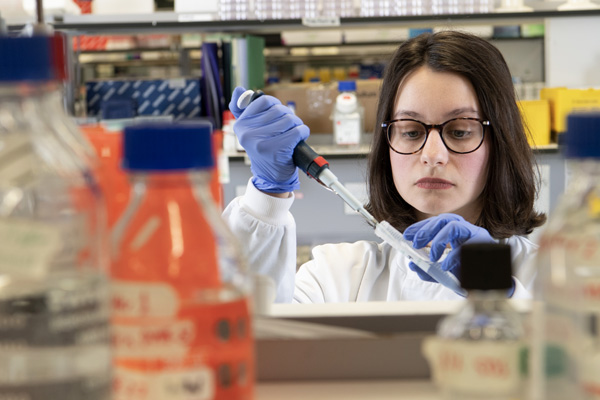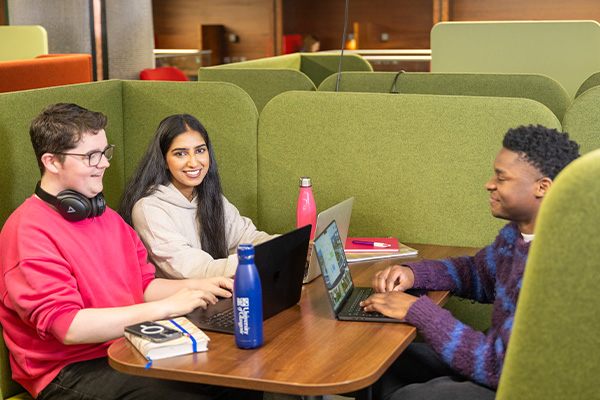People
Guidelines for photographs of students, staff and visitors to reflect University life and activity
Genre: a natural reportage style showing students, staff and visitors around campus with the buildings and facilities as a backdrop.
Environment: both indoors and outdoors (not usually a studio). Person/people are focus but environment should clearly relate to the University, subject or activity.
Lighting: lighting should appear natural.
People: ideally, images should feature real people and not models. However, occasionally, to be GDPR-compliant, it may be necessary to use images of people from stock photo libraries such as Shutterstock. People should look natural and, if more than one person, there should be interaction with each other. There should be an appropriate mix of age, gender and race.
Wardrobe: try to choose photographs in which clothes and accessories match the approved colour palette. Branded items are fine but be careful there are no offensive slogans or logos that might quickly date an image. Patterned clothes should be avoided.
Positioning & framing: avoid choosing photographs in which the main person/people are in the centre of the photo; this can often appear quite static and does not work well in terms of additional content such as text which may need to be added over the image, or if the image is to be placed into a printed brochure as there can be issues with staples or other forms of binding. Instead, choose an image in which the main subject is on the right hand or left hand side of the frame.
Additional information for a photoshoot
Lighting: lighting should appear natural, using the available naturally occurring light where possible. Extra lighting can be added to emphasise areas or people from the image, but should not create an unrealistic feel or become overpowering. Additional lighting is useful for images taken inside or to accentuate extra foreground detail outside on a darker day. Diffused soft light sources are particularly effective for this as they do not create sharp-edged shadows.
Colour palette: should match the approved colour palette.
Treatment: any filters added should still retain a natural effect (eg natural skin tones) and not be overly stylised, natural in-camera effects such as lens flare is fine.
Positioning & framing: try to have your main subject on the right hand or left hand side of the frame rather than in the middle. Not only does this create a more dynamic layout, but can also be helpful to create negative space if you are adding any additional content, and it will allow you to crop more tightly into an image if you need a front cover image or if you want to creates a more intimate feel. Be aware of the background in your image to ensure no unexpected or unwanted additions.
Always try to take landscape (wide) images rather than portrait-shaped as this will ensure your image will be suitable across multiple platforms including double page spreads in a brochure, PowerPoint slide or on the University website.
GDPR compliance: photographs of students or individuals who are the focus of a shot are considered personal data and are therefore subject to the Data Protection Act. Signed consent must be obtained. Find out more about obtaining signed consent.
Further guidance: how to run a photoshoot.


